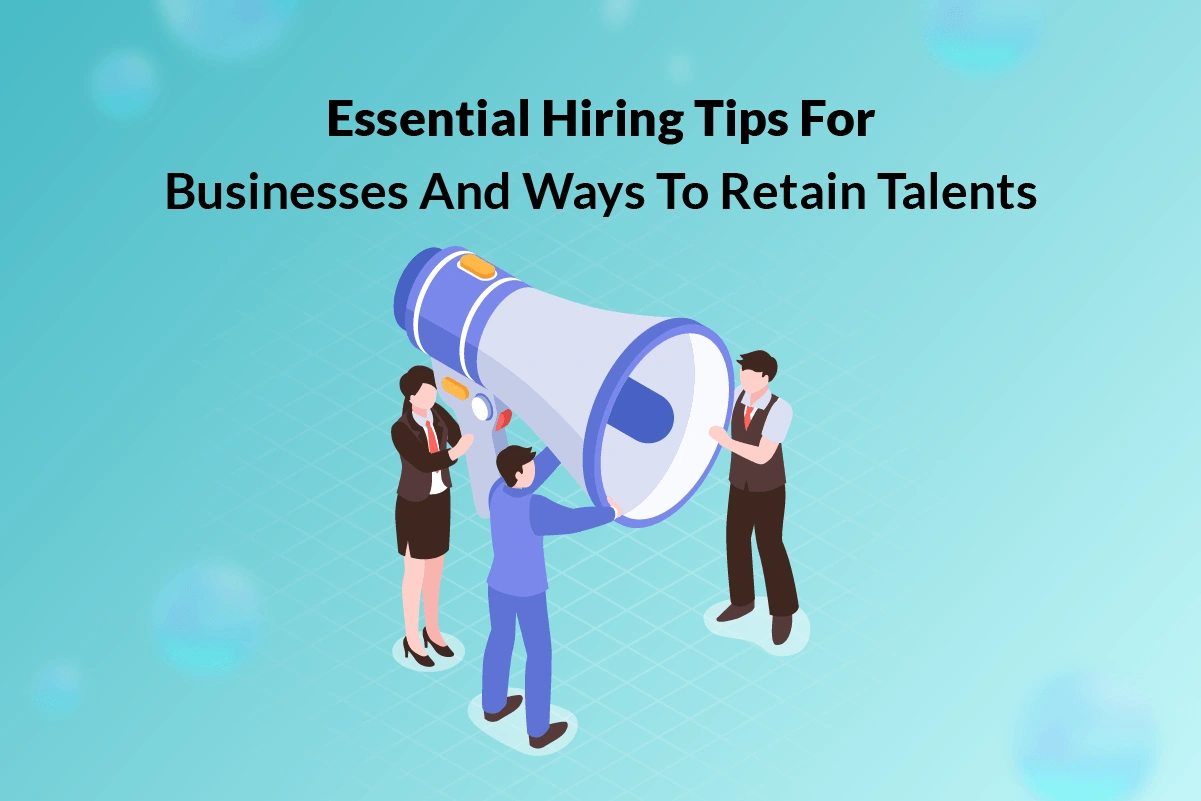Recruiting new talent is an inevitable part of any organization and business. It’s more complicated than just reviewing applicants’ resumes and conducting interviews.
Therefore, as an employer, you will need to know a few hiring tips for businesses to improve the hiring process and hire the best candidates. It is also the main topic of this post. So let’s get into the details!
Have a Clear Job Description
A job description is one of the first interactions that job seekers have with your organization. So ensure you write job descriptions that accurately reflect your business and the requirements to be successful in the open position.
For instance, you should be clear about the specific skills (hard and soft skills) needed, the key responsibilities and a description of your company’s culture, vision and mission. Your job description also needs to explain what you can provide them in return, such as salary, benefits and career progression.
A decent job description will allow you to weed out candidates who are not a good fit and leave you with a more focused pool of resumes to consider.
Provide EEO Statement
Nowadays, attracting and retaining diverse talent requires demonstrating a commitment early and often in your hiring process. A great place to begin is with a meaningful and sincere EEO (Equal Employer Opportunity) statement.
An EEO statement is an written commitment by the businesses to follow the regulations of the EEOC and honor non-discriminatory employment.
In fact, the primary purpose of those statements is to stop anyone involved in a hiring process from picking a candidate (or rejecting an applicant) based on personal bias.
In addition to letting potential applicants know your business takes workplace discrimination seriously, including an EEO statement allows you to attract a broader pool of talent.
Be Honest About Pay Range, Overtime, Future Raises, and Other Benefits
Currently, many businesses do not disclose the salary and extra benefits in their job description for many reasons, such as:
- They want to hide pay from their competitors.
- They want to hide pay from current employees
- They are trying to lowball applicants
However, we recommend being clear and transparent about your pay range, salary increase plan, and other benefits. In fact, several states such as California and Colorado mandate that the salary range is declared on job postings.
First, it will save you time by weeding out candidates who wouldn’t accept your salary offer. That way, you can avoid wasting time with applicants asking for too high a salary, skipping unrealistic salary negotiations during your hiring process.
Publishing the salary range builds trust with candidates. Diverse candidates will apply knowing that they can negotiate for the same salary scale as other candidates. Instead of worrying about complex salary negotiations, it’s always best to be transparent with pay, so there’s a feeling of openness.
Focus On Employer Branding
Simply put, an employer brand is formed from your reputation among the workforce and your employees’ perception of you as an employer. So employer branding is how you market your business to internal employees and job seekers.
The better you are at employer branding, the more likely you are to attract great talent. In addition, a decent employer brand can help you retain top talent. Mostly because it shows and intentionality around building a great workplace culture.
Here are the 10 best practices for employer branding:
- Make employer branding a crucial part of the HR strategy.
- Keep your employees and candidates happy by listening to their suggestions.
- Embrace storytelling.
- Show your corporate values by doing something to benefit a cause that is close to your mission.
- Stay active on social media.
- Engage the management team to gain workplace feedback.
- Make friends with like-minded businesses and organizations.
- Practice empathy.
- Host and join events.
Choose the Right Candidates in Your Talent Pool
A talent pool is a database containing information about potential candidates, applicants, and the company’s current and former employees. In other words, it includes the data of all qualified candidates saved for future consideration. You can easily manage the talent pool with an ATS (applicant tracking system).
You can use this data to:
- Fill difficult open positions
- Minimize employment gaps
- Develop workforce planning
- Make succession planning
- Improve inclusion and diversity recruitment practices
One of the significant mistakes many recruiters make is not keeping in touch with unselected candidates. Although they were not selected, they are probably potential individuals that align with your business’s long-term goals.
Here are some suitable candidates from your ATS that you should consider consistently engaging.
- Previous candidates that were unselected
- Former employees
- Trainees and interns
- Employee recommendations
- Social media contacts
Post Your Job Opening on Multiple Sites
If you want to reach as many potential candidates as possible, posting your roles on your business’s job page may not be enough. Instead, you might consider finding candidates from a variety of sources, such as:
- Social networks: LinkedIn, Facebook, Instagram, Twitter.
- Free Job boards.
- Paid Job boards.
- Recruiting companies.
Recruiting via social networks is very helpful if you’re targeting Gen Z candidates.
Have a Clear Onboarding Process for New Employees
An onboarding process refers to helping your new employees feel comfortable in their new environment and with their new team right off the bat.
This process can be as simple as intentionally introducing your new employees to your current ones or as complex as offering in-depth training on company procedures and software.
For a successful onboarding process, you should consider the Four C’s of your business:
- Clarification: Educate your new employees on their job functions as well as performance expectations
- Compliance: Teach your new employees the basic regulations, rules, and policies of your business.
- Connection: Help them build interdepartmental and interpersonal relationships in your business.
- Culture: Advise them on formal and informal organizational norms, such as the dress code.
You can find out more about how long the hiring recruitment takes or ways to speed up it through this article:
How Long Is The Hiring Process? Why Does It Take So Long Sometimes?
Wrapping It Up
Now that you have learned key aspects of running an efficient and effective recruiting process, you should feel equipped to post your role. We feel confident that by applying our essential hiring tips for businesses, you’ll attract the best candidates while cutting down on recruitment time and costs.
Thanks for stopping by! Please share this article if it was helpful to you!




